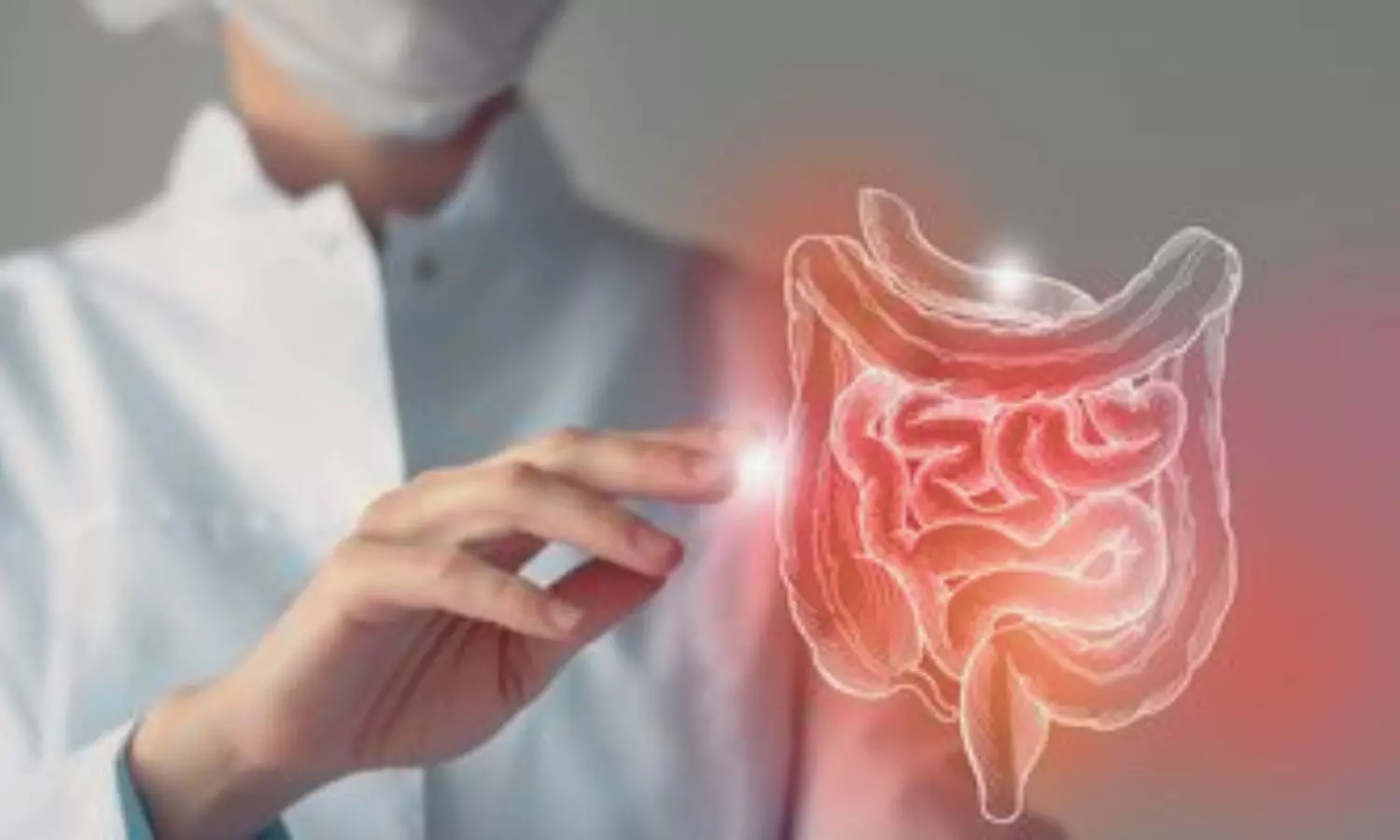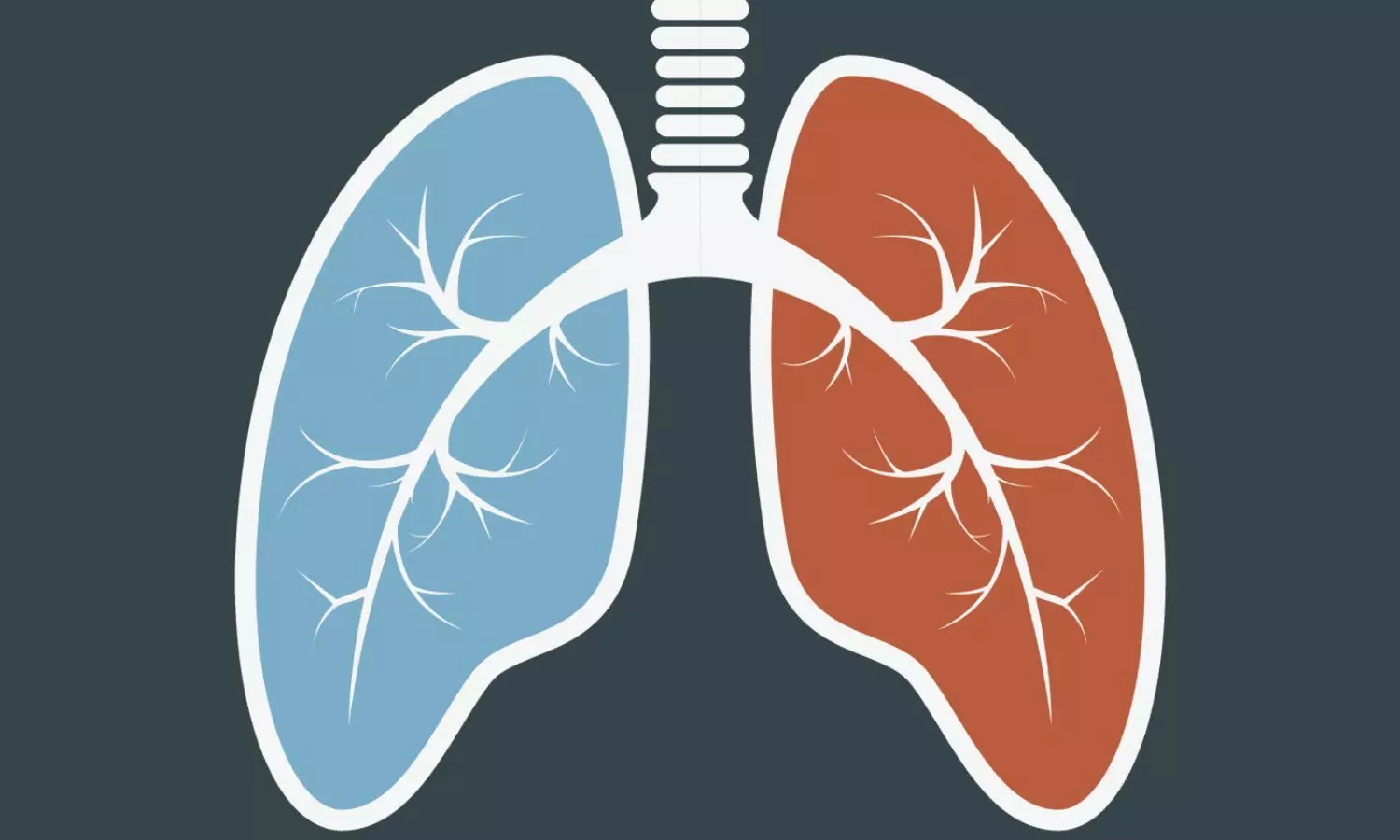UK’s General Medical Council urged to revise terminology for international medical graduates
Powered by WPeMatico
Powered by WPeMatico

Bangalore: Biocon has recently announced that the U.S. Food and Drug Administration (USFDA) has issued Form 483s with 4 observations at the conclusion of the inspection at the Biocon Biologics Limited’s Biocon Campus (Site 1) facility.
An FDA Form 483 is issued to firm management at the conclusion of an inspection when an investigator(s) has observed any conditions that in their judgment may constitute violations of the Food Drug and Cosmetic (FD&C) Act and related Acts.
The inspection was conducted between February 20-28, 2024.
This inspection pertains exclusively to the rh-Insulin (rhI) Drug Substance (DS) supply to a customer for
veterinary use.
“The trigger for this inspection was a Pre-Approval Supplement (PAS) filed by our customer
late last year,” the Company’s Spokesperson said in a BSE filing.
“The Company will
submit a comprehensive Corrective and Preventive Action (CAPA) Plan to the U.S. FDA within the stipulated
time and is committed to addressing these observations expeditiously.
The outcome of this inspection at Site 1 does not impact the manufacturing and distribution of the
Company’s commercial products in the US market.
Biocon Biologics remains committed to global standards of Quality and Compliance.” he added.
Read also: Biocon registers consolidated revenue of Rs 4519 crore in Q3
Biocon Biologics Ltd. (BBL), a subsidiary of Biocon Ltd., is a unique, fully integrated, global biosimilars company.
BBL has acquired the global biosimilars business of its long-standing partner Viatris. Biocon Biologics has commercialized eight biosimilars in key emerging markets and advanced markets like U.S., EU, Australia, Canada, Japan. The Company has a pipeline of 20 biosimilar assets across diabetology, oncology, immunology, and other noncommunicable diseases.
Read also: Biocon Biologics, Sandoz Australia ink pact for biosimilars Trastuzumab, Bevacizumab
Powered by WPeMatico

Chandigarh: In response to a query by Congress MLA Jagbir Singh Malik, Haryana’s Health Minister Anil Vij disclosed that out of the 4,260 sanctioned medical officer posts in the state, a staggering 1,134 remain unfilled.
The question highlighted the concerns about a potential shortage of specialists and doctors in Haryana. Anil Vij on Tuesday said in the state assembly that at least 26% of posts of medical officers alone are vacant.
The health minister acknowledged that, in the past nine years, 608 medical officers have been appointed to address staffing gaps. However, the persistent vacancies pose challenges to the healthcare system. According to official data, districts like Karnal, Yamunanagar, and Kurukshetra are among those most affected by the shortage, with 61, 54, and 53 vacant doctor positions, respectively. The other districts included Kaithal with a shortage of 49, Bhiwani 48, Fatehabad 47, Hisar 38, Jind and Ambala 35 each, Panipat and Sonepat 17 each, Faridabad 6 and Gurugram 1.
To tackle this issue, Vij announced that the government plans to create a specialist cadre, pending approval from the finance department. Once approved, separate recruitment drives for the specialist and MBBS cadres will be initiated. Despite the existing challenges, an official spokesperson assured that out of the total 5,522 sanctioned doctor positions in the state, 4,016 are currently filled.
However, the persistent 1,506 vacancies underscore the urgency of addressing the healthcare staff shortage to ensure the delivery of quality medical services to the residents of Haryana, reports The Daily.
Medical Dialogues team had earlier reported that the Haryana Civil Medical Service (HCMS) Association was demanding the recruitment of more specialist doctors in Government Service by offering them an attractive salary package. The doctors talked about the scarcity of specialist doctors in the State, where half of the posts of specialist doctors were lying vacant till last year.
Highlighting that the work environment was not conducive in Government hospitals, the doctors mentioned how Government doctors were required to attend to several other kinds of non-clinical duties. The association even went on to stage protests airing its concerns.
Powered by WPeMatico

Jaipur: The National Institute of Ayurveda, Jaipur under the Ministry of Ayush of the Government of India and the Department of Thai Traditional and Alternative Medicine of the Ministry of Public Health of the Government of the Kingdom of Thailand signed a Memorandum of Understanding (MoU) on the establishment of an Academic Collaboration in Ayurveda and Thai Traditional Medicine in New Delhi, India at 10th India-Thailand Joint Commission Meeting held at Hyderabad House, New Delhi.
Shri B.K. Singh, Joint Secretary, Ministry of Ayush, Government of India, and Dr. Taweesin Visanuyothin, Director General, Department of Thai Traditional and Alternative Medicine Thailand signed the MoU in the presence of other dignitaries during the event.
The initiative has been taken to promote, facilitate, and develop academic collaboration in the field of Ayurveda and Thai Traditional Medicine based on equality and mutual benefit of the Participants. This MoU will facilitate the exchange of experts for research and training programs, academic and technical activities, and conducting research, exchange of information, technologies, and best practices of Traditional Medicine.
The Participants will take necessary steps to encourage and promote cooperation in facilitating academic and technical activities and conducting research for mutual benefits. Exchanging and accommodating experts, teaching instructors, practitioners, and students for research and training programmes. Exchanging knowledge, experiences, information, technologies, and best practices. Providing scholarships for education.
Promoting the participation of experts in conferences, workshops, seminars, and events held by the Participants and other important areas of cooperation, with the mutual consent of the Participants.
During implementation of this MOU, the Participants, within their capacities will support each other with mutual cooperation and collaborative activities on the basis of equality and mutual benefits by facilitating training courses in Thailand and India, conducting collaborative research studies on diseases of common interest to both Participants and visits and exchanges of policy makers, academics, experts, researchers, practitioners, and students.
NIA and Department of Thai Traditional and Alternative Medicine, Thailand will share information on regulatory mechanisms, best practice, guidelines of practice and courses of study and training; and organize conferences/meetings alternately in India and Thailand and reviewing the progress of the implementation of the MOU and the evaluation of the results of collaborative programmes.
Powered by WPeMatico

A recent study unveiled the long-term consequences of COVID-19 with encouraging news for survivors of COVID-19-associated acute kidney injury (COVID-AKI). The study was published in the Journal of American Medical Association highlighted the lingering effects on kidney function in patients who battled COVID-19.
The retrospective longitudinal multicenter cohort study spanned from March 2020 to June 2022 and analyzed electronic health records of adult hospitalized patients with AKI by comparing the outcomes between those with COVID-19 and influenza-related AKI, as well as AKI from other causes. The study followed up with patients for up to two years post-discharge to assess the incidence of major adverse kidney events (MAKE), including mortality and the worsened kidney function.
The results of this study were from the analysis of 9624 hospitalized patients, including 987 with COVID-AKI. Despite initial concerns regarding the impact of COVID-19 on renal health, the survivors of COVID-AKI expressed lower rates of MAKE when compared to patients with AKI from other causes. The findings revealed a significantly lower risk of mortality and kidney function decline among the individuals who underwent COVID-19 by suggesting a more favorable long-term prognosis for kidney health in this cohort.
The study highlighted distinct demographic and clinical characteristics among patients with COVID-AKI, including a slightly younger age, higher baseline kidney function and more severe illness markers which indicates the unique challenges faced by this population. In summary, the findings of the study suggest that survivors of COVID-AKI may experience better long-term kidney function and lower mortality rates when compared to those with AKI from other causes that offers hope in the fight against the lasting impacts of the pandemic.
Source:
Aklilu, A. M., Kumar, S., Nugent, J., Yamamoto, Y., Coronel-Moreno, C., Kadhim, B., Faulkner, S. C., O’Connor, K. D., Yasmin, F., Greenberg, J. H., Moledina, D. G., Testani, J. M., & Wilson, F. P. (2024). COVID-19−Associated Acute Kidney Injury and Longitudinal Kidney Outcomes. In JAMA Internal Medicine. American Medical Association (AMA). https://doi.org/10.1001/jamainternmed.2023.8225
Powered by WPeMatico

A recent study published in the Journal of American Medical Association revealed that early invitation to Colorectal cancer (CRC) screening could significantly reduce the cancer-specific mortality when compared to late or no invitation. This research spanning from January 2008 to December 2021 to evaluate the impact of routine CRC screening using fecal occult blood testing on cancer-specific mortality.
This study was conducted in the Stockholm-Gotland region of Sweden encompassed a total of 379,448 individuals born from 1938 to 1954 and analyzed data from December 2022 to June 2023.
The participants were categorized into groups based on their invitation to screening as early (2008-2012), late (2013-2015) or no invitation. The early invitation group which constituted 203,670 individuals was compared to the control group of 175,778 individuals who received late or no invitation.
The results demonstrated a significant decrease in CRC mortality among those who underwent early screening. The individuals in the early screening group expressed a reduced risk of CRC mortality by 14% when compared to the control group. Also, the study found a corresponding decrease in excess mortality which further emphasizes the positive impact of early CRC screening.
Despite challenges in evaluating the effectiveness of population-based CRC screening programs, this study provides compelling evidence that supports their efficacy in reducing cancer-specific mortality rates. The mean screening participation rate was 63.3% which indicates a significant uptake of screening within the studied population.
The outcomes underscore the importance of routine CRC screening with fecal occult blood testing as a crucial preventive measure against colorectal cancer. This suggest that the true association between screening and reduced mortality could be even higher, considering potential factors such as testing coexistence in the control group and delayed CRC diagnoses.
Reference:
Blom, J., Saraste, D., Törnberg, S., & Jonsson, H. (2024). Routine Fecal Occult Blood Screening and Colorectal Cancer Mortality in Sweden. In JAMA Network Open (Vol. 7, Issue 2, p. e240516). American Medical Association (AMA). https://doi.org/10.1001/jamanetworkopen.2024.0516
Powered by WPeMatico

Patients diagnosed with steatotic liver disease (formerly called fatty liver disease) are usually advised to stop drinking alcoholic beverages. But a new study led by Cedars-Sinai found that drinking, on average, a small amount of alcohol a day did not lead to further liver damage in patients with mild disease.
The study is published in JAMA Network Open.
“We found that patients in the early stages of steatotic liver disease could consume less than 7.4 grams of alcohol a day without elevating their risk for advanced liver fibrosis which is associated with severe health problems including liver cancer, organ failure and even death,” said Yee Hui Yeo, MD, first author of the study and a clinical fellow in the Karsh Division of Gastroenterology and Hepatology at Cedars-Sinai.
“That amount is equivalent to about 6 ounces of beer, 2.5 ounces of wine and less than 1 ounce of a distilled spirit, like vodka or tequila,” Yeo said.
Steatotic liver disease is the most common chronic liver condition in the U.S., according to the American Liver Foundation, which estimates that 1 in 4 adults have the condition, which is often undiagnosed. Patients are advised to abstain from alcohol consumption, which can further damage the organ. But abstinence can be challenging for many people, even those who are light drinkers and or who have alcohol use disorder, according to the study authors.
“A critical gap in our understanding of steatotic liver disease progression has been the lack of concrete data to define a ‘safe’ level of alcohol consumption for those patients who can’t quit drinking. Our study addresses this unmet need by providing empirical evidence on the relationship between alcohol intake levels and the progression of early-stage disease,” Yeo said.
In the cohort study, Yeo-working with medical scientists in China-evaluated data from the U.S. National Health and Nutrition Examination Survey III. Investigators reviewed the health surveys from nearly 3,000 people with steatotic liver disease to identify a safe threshold for alcohol consumption.
Yeo emphasizes the findings are not a recommendation that patients with steatotic liver disease continue to drink but are intended to guide their care if abstinence is challenging.
“There has been ambiguity about the extent to which alcohol consumption exacerbates steatotic liver disease. We want to reduce this uncertainty by providing evidence-based information. We favor abstinence as the safest course of action for these patients. But for those who are not able to stop drinking, these findings provide concrete guidelines for making decisions about their health and lifestyle,” Yeo said.
In addition to limiting alcohol consumption, Yeo advises patients with steatotic liver disease improve their diet, get regular physical exercise and manage risk factors, which include hypertension, obesity, diabetes and prediabetes.
“While it is still best to counsel abstinence for patients with this liver disease, the study defines a threshold beyond which alcohol consumption can increase mortality. The results provide new guidance for clinicians and patients,” said Shelly Lu, MD, the Women’s Guild Chair in Gastroenterology and director of the Division of Digestive and Liver Diseases at Cedars-Sinai.
Reference:
Yeo YH, Zhu Y, Arab JP, et al. Alcohol Intake Thresholds Among Individuals With Steatotic Liver Disease. JAMA Netw Open. 2023;6(12):e2347548. doi:10.1001/jamanetworkopen.2023.47548.
Powered by WPeMatico

A recent study published in The Annals of Thoracic Surgery highlights the outcomes of patients who underwent Veno-Arterial Extracorporeal Life Support (VA-ECLS) for various indications by majorly focusing on acute pulmonary embolism (PE). The study by Erik Scott and team examined data from the Extracorporeal Life Support Organization global registry that spanned from 2010 to 2019.
The findings analyzed a cohort of 26,583 patients in total with 978 (3.7%) participants on VA-ECLS for acute PE as the primary diagnosis that revealed significant differences in outcomes based on the indication for VA-ECLS. The patients receiving VA-ECLS for acute PE were found to have a significantly higher likelihood of survival to hospital discharge compared to those supported for other reasons.
The individuals undergoing VA-ECLS for acute PE were 78% more likely to be discharged alive by highlighting the potential efficacy of this intervention in managing acute PE cases. Also, these patients expressed fewer cardiovascular and renal complications when compared to their counterparts who were supported for other indications, suggesting a relatively smoother recovery trajectory.
However, the analysis also unveiled higher rates of mechanical complications among patients who undergo VA-ECLS for acute PE that suggests the need for careful monitoring and management of such issues during treatment.
The outcomes of the study emphasized the significance of guiding clinical decision-making for patients requiring VA-ECLS support, particularly in cases of acute PE. Additional findings underscore the importance of considering VA-ECLS as a crucial intervention for acute PE cases, given the improved survival outcomes observed in this patient population. While further research is mandated to analyze deeper into the nuances of VA-ECLS outcomes across different indications, this study provides valuable insights into the potential benefits and considerations associated with employing VA-ECLS in cases of acute PE.
Reference:
Scott, E. J., Young, S., Ratcliffe, S. J., Wang, X.-Q., Mehaffey, J. H., Sharma, A., Rycus, P., Tonna, J., Yarboro, L., Bryner, B., Collins, M., & Teman, N. R. (2024). Veno-Arterial Extracorporeal Life Support Use in Acute Pulmonary Embolism Shows Favorable Outcomes. In The Annals of Thoracic Surgery. Elsevier BV. https://doi.org/10.1016/j.athoracsur.2024.02.008
Powered by WPeMatico

Consistent evidence shows that higher exposure to ultra-processed foods is associated with an increased risk of 32 damaging health outcomes including cancer, major heart and lung conditions, mental health disorders, and early death.
The findings, published by The BMJ today, show that diets high in ultra-processed food may be harmful to many body systems and underscore the need for urgent measures that target and aim to reduce dietary exposure to these products and better understand the mechanisms linking them to poor health.
Ultra-processed foods, including packaged baked goods and snacks, fizzy drinks, sugary cereals, and ready-to-eat or heat products, undergo multiple industrial processes and often contain colours, emulsifiers, flavours, and other additives. These products also tend to be high in added sugar, fat, and/or salt, but are low in vitamins and fibre.
They can account for up to 58% of total daily energy intake in some high income countries, and have rapidly increased in many low and middle income nations in recent decades.
Many previous studies and meta-analyses have linked highly processed food to poor health, but no comprehensive review has yet provided a broad assessment of the evidence in this area.
To bridge this gap, researchers carried out an umbrella review (a high-level evidence summary) of 45 distinct pooled meta-analyses from 14 review articles associating ultra-processed foods with adverse health outcomes.
The review articles were all published in the past three years and involved almost 10 million participants. None were funded by companies involved in the production of ultra-processed foods.
Estimates of exposure to ultra-processed foods were obtained from a combination of food frequency questionnaires, 24 hour dietary recalls, and dietary history and were measured as higher versus lower consumption, additional servings per day, or a 10% increment.
The researchers graded the evidence as convincing, highly suggestive, suggestive, weak, or no evidence. They also assessed the quality of evidence as high, moderate, low, or very low.
Overall, the results show that higher exposure to ultra-processed foods was consistently associated with an increased risk of 32 adverse health outcomes.
Convincing evidence showed that higher ultra-processed food intake was associated with around a 50% increased risk of cardiovascular disease related death, a 48-53% higher risk of anxiety and common mental disorders, and a 12% greater risk of type 2 diabetes.
Highly suggestive evidence also indicated that higher ultra-processed food intake was associated with a 21% greater risk of death from any cause, a 40-66% increased risk of heart disease related death, obesity, type 2 diabetes, and sleep problems, and a 22% increased risk of depression.
Evidence for the associations of ultra-processed food exposure with asthma, gastrointestinal health, some cancers and cardiometabolic risk factors, such as high blood fats and low levels of ‘good’ cholesterol, remains limited.
The researchers acknowledge that umbrella reviews can only provide high-level overviews and they can’t rule out the possibility that other unmeasured factors and variations in assessing ultra-processed food intake may have influenced their results.
However, their use of rigorous and prespecified systematic methods to evaluate the credibility and quality of the analyses suggests that the results withstand scrutiny.
As such, they conclude: “These findings support urgent mechanistic research and public health actions that seek to target and minimise ultra-processed food consumption for improved population health.”
Ultra-processed foods damage health and shorten life, say researchers in a linked editorial. So what can be done to control and reduce their production and consumption, which is rising worldwide?
They point out that reformulation does not eliminate harm, and profitability discourages manufacturers from switching to make nutritious foods, so public policies and action on ultra-processed foods are essential.
These include front-of-pack labels, restricting advertising and prohibiting sales in or near schools and hospitals, and fiscal and other measures that make unprocessed or minimally processed foods and freshly prepared meals as accessible and available as, and cheaper than, ultra-processed foods.
It is now time for United Nations agencies, with member states, to develop and implement a framework convention on ultra-processed foods similar to the framework on tobacco, and promote examples of best practice, they write.
Finally, they say multidisciplinary investigations “are needed to identify the most effective ways to control and reduce ultra-processing and to quantify and track the cost-benefits and other effects of all such policies and actions on human health and welfare, society, culture, employment, and the environment.”
Reference:
Lane M M, Gamage E, Du S, Ashtree D N, McGuinness A J, Gauci S et al. Ultra-processed food exposure and adverse health outcomes: umbrella review of epidemiological meta-analyses BMJ 2024; 384 :e077310 doi:10.1136/bmj-2023-077310.
Powered by WPeMatico

Murodulla Karimov et al conducted a study to evaluate the possibility of precise intraoperative localization of the lateral genicular arteries by an orthopaedic surgeon using the transillumination method. The study was published in “International Orthopaedics.”
The authors utilized the light of Storz Xenon 300 Light Source for Endoscopy, the tip of which is tightly inserted into the intra-articular side of the lateral retinaculum, while lifting and everting the patella outwards in 90° with towel clips in the medial edge (the limb is in 180° of extension), while the assistant makes fan-like movements from top to bottom and medial to lateral. The arteries are visualized as dark red and identified in the upper-lateral and lower-lateral directions lateral retinaculum, after which the direction of the arteries is marked with a marker. Next, the lateral retinaculum is released distally from the marked edges to the blood vessels, which remain intact.
12 patients underwent cemented TKA with patella-friendly Zimmer Biomet NexGen Legacy Posterior Stabilized prostheses (without patellar resurfacing), seven right knees and five left knees. The mean age of patients in the study group was 66.636 ± 7.003 years. The minimal follow-up period was 13 months (mean—16.363 ± 2.5 months). Functional outcomes were assessed using Knee Society and a specific patellar questionnaire—Kujala Score. Intraoperative detection of insufficient patellar stability and/or patellar maltracking was based on the no-thumb technique. In pre- and postoperative period X-ray investigation, standard standing X-ray and Merchant view were used to evaluate implant position and patellofemoral congruency.
Key findings of the study were:
• In this study, ten out of twelve knee joints (83.3%) had at least one artery visible by the proposed method in the lateral parapatellar area.
• Five out of ten knee joints had more than one artery that could be visualized and identified as an arterial vessel.
• Postoperative Knee Society Score showed significant improvement from a mean 51.181 ± 3.868 to a mean 88.727 ± 3.663.
• Mean hospital length of stay is 8.545 ± 1.863 days.
• X-ray assessment using standard anteroposterior, lateral, and Merchant skyline views showed appropriate implant positioning and patellofemoral congruency.
• The mean Kujala Score in the postoperative period (3 and 6 months) was 67.3 ± 6.75 and 75.6 ± 6.42, respectively.
The authors concluded that – “Lateral release of the patellar retinaculum should be carried out under careful monitoring and visualization of the lateral genicular arteries. Using the proposed transillumination method, an orthopaedic surgeon can perform a lateral release while pre serving the lateral blood supply to the patella, when the medial side has already been sacrificed by the medial parapatellar approach. This method provides an opportunity to avoid iatrogenic devascularization of the patella, postoperative patellar complications, and, importantly, blood loss reduction in TKA.”
Further reading:
Transillumination method in total knee arthroplasty: new approach with old tools
Murodulla Karimov, Sarvar Madrakhimov
International Orthopaedics (2024) 48:449–454
https://doi.org/10.1007/s00264-023-05977-6
Powered by WPeMatico
